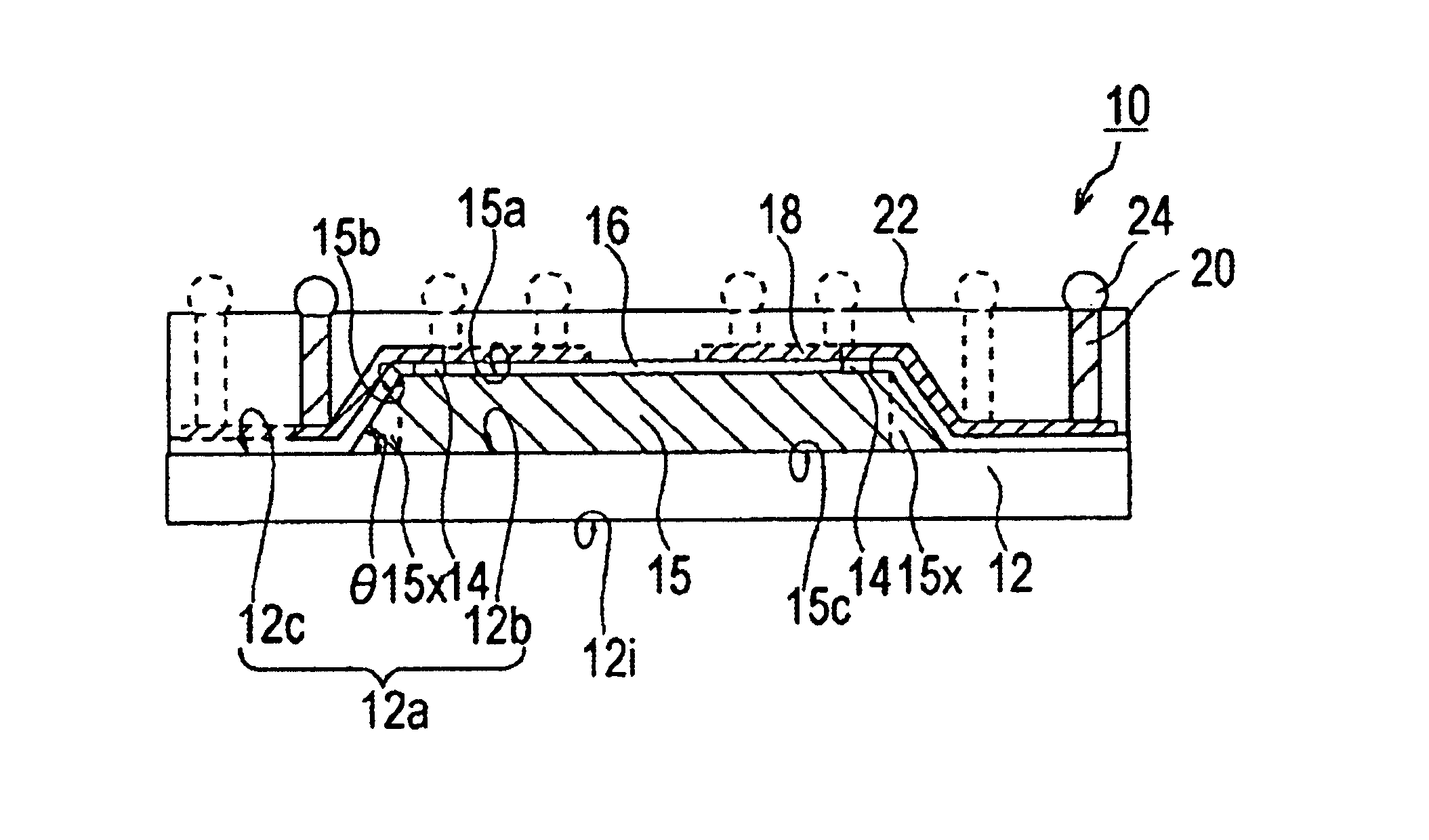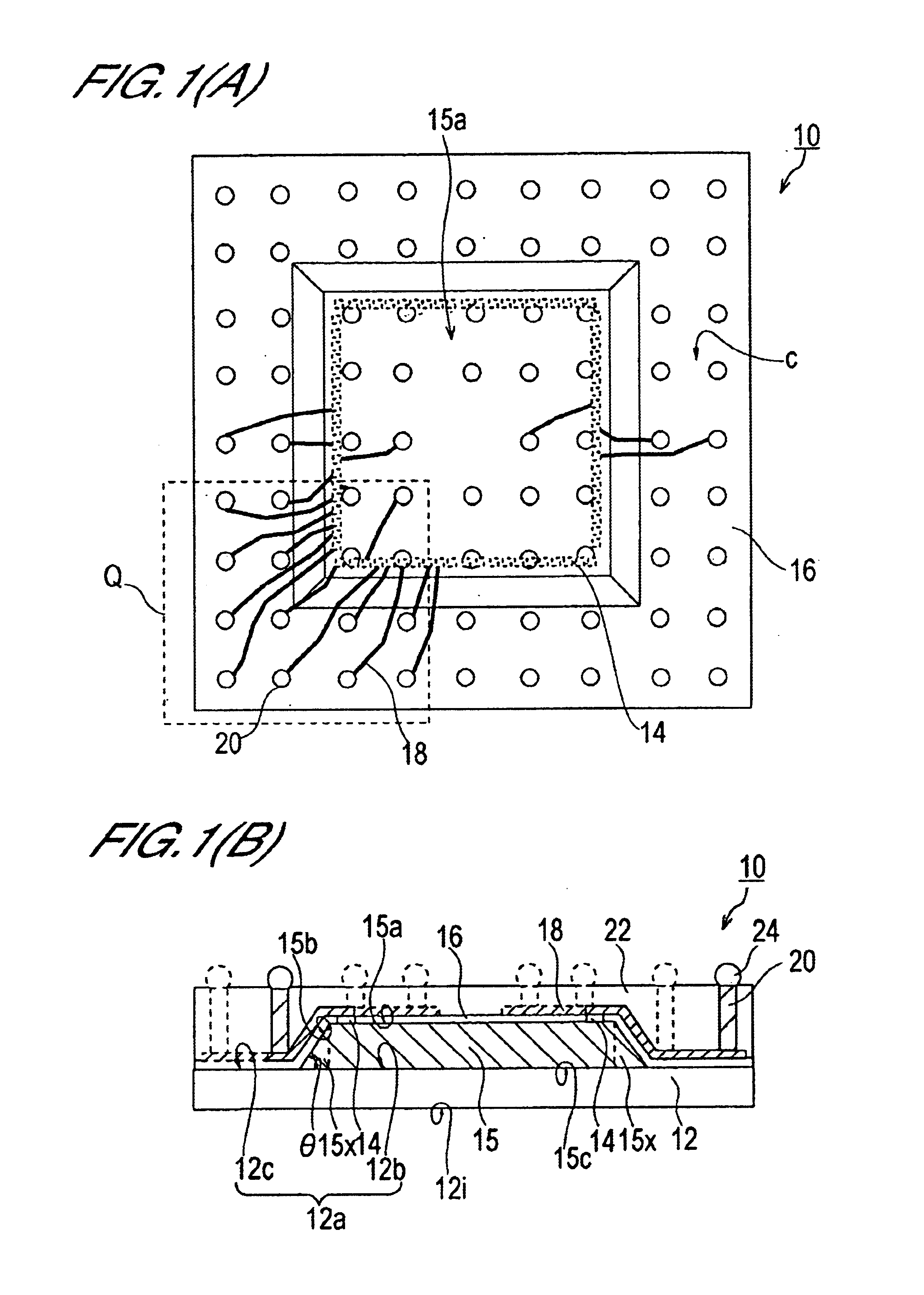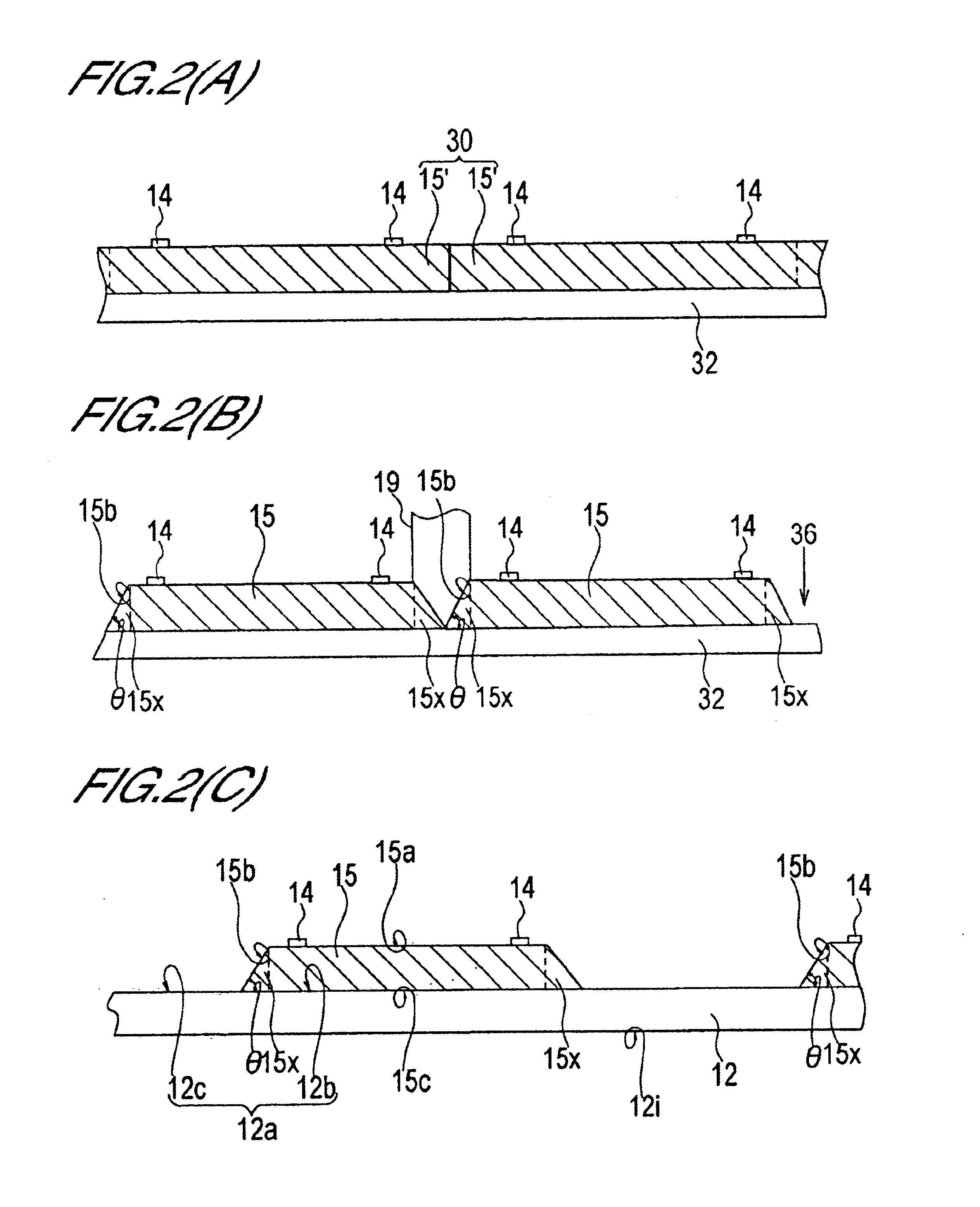Semiconductor device
- Summary
- Abstract
- Description
- Claims
- Application Information
AI Technical Summary
Benefits of technology
Problems solved by technology
Method used
Image
Examples
first embodiment
[0057
[0058]A description will now be provided for the semiconductor device and fabrication method thereof according to the first embodiment of the invention, with reference to FIGS. 1 to 3. FIG. 1(A) is an outline planar view of a semiconductor device 10 of this embodiment. Further, although FIG. 1(B) does not correspond with FIG. 1(A), FIG. 1(B) is a cross-sectional view in which, in order to describe the appearance of the connection between and disposition of the constituent elements of the semiconductor device 10, the connection between and disposition of these elements are modified and shown in outline. Further, in FIG. 1(A), there is no illustration of the external terminals and so forth formed on the post portions 20, and, with the exception of a region Q in this figure, the overview of part of first pads 14, a first wiring layer 18 and the post portions 20 does not include such an illustration (as is also the case for the embodiments below)
[0059]As shown in FIG. 1(A), the fir...
second embodiment
[0095
[0096]A description will now be provided for a semiconductor device 11 according to the second embodiment of the present invention, with reference to FIGS. 4(A) and 4(B).
[0097]The principal points of difference between the first and second embodiments are as follows. First, a through-hole 38 is formed as a perforation in the substrate 12 which is a semiconductor chip carrying portion, this through-hole 38 comprising a conductive portion 39 affording conduction between the two sides of the substrate 12, that is, from the third main surface 12a through to the fourth main surface 12i. The conductive portion 39 is electrically connected to the first wiring layer 18, and the substrate 12 comprises a wiring portion 27 that transects the regional part facing the first semiconductor chip 15, the wiring portion 27 being electrically connected to the first wiring layer 18. Further, constituent elements which are the same as those already described in the first embodiment are shown with t...
third embodiment
[0112
[0113]A description will now be provided for a semiconductor device 50 according to the third embodiment of the present invention, with reference to FIGS. 5 and 6.
[0114]In this embodiment, the main point of difference from the first embodiment is that the semiconductor chip carrying portion is a second semiconductor chip 44 which comprises circuit elements and that the second semiconductor chip 44 is electrically connected to the first wiring layer 18.
[0115]As shown in FIG. 5(A), the planar form of the second semiconductor chip 44 which is the semiconductor chip carrying portion is square. Fourth pads 45 comprising aluminum (Al) are arranged at predetermined intervals along the perimeter of the second semiconductor chip 44, on a mount surface 44a which constitutes the third main surface of the second semiconductor chip 44, and the fourth pads 45 are constituted so as to be electrically connected to the first wiring layer 18. Further, the placement quantity of the fourth pads 45...
PUM
 Login to View More
Login to View More Abstract
Description
Claims
Application Information
 Login to View More
Login to View More - R&D
- Intellectual Property
- Life Sciences
- Materials
- Tech Scout
- Unparalleled Data Quality
- Higher Quality Content
- 60% Fewer Hallucinations
Browse by: Latest US Patents, China's latest patents, Technical Efficacy Thesaurus, Application Domain, Technology Topic, Popular Technical Reports.
© 2025 PatSnap. All rights reserved.Legal|Privacy policy|Modern Slavery Act Transparency Statement|Sitemap|About US| Contact US: help@patsnap.com



